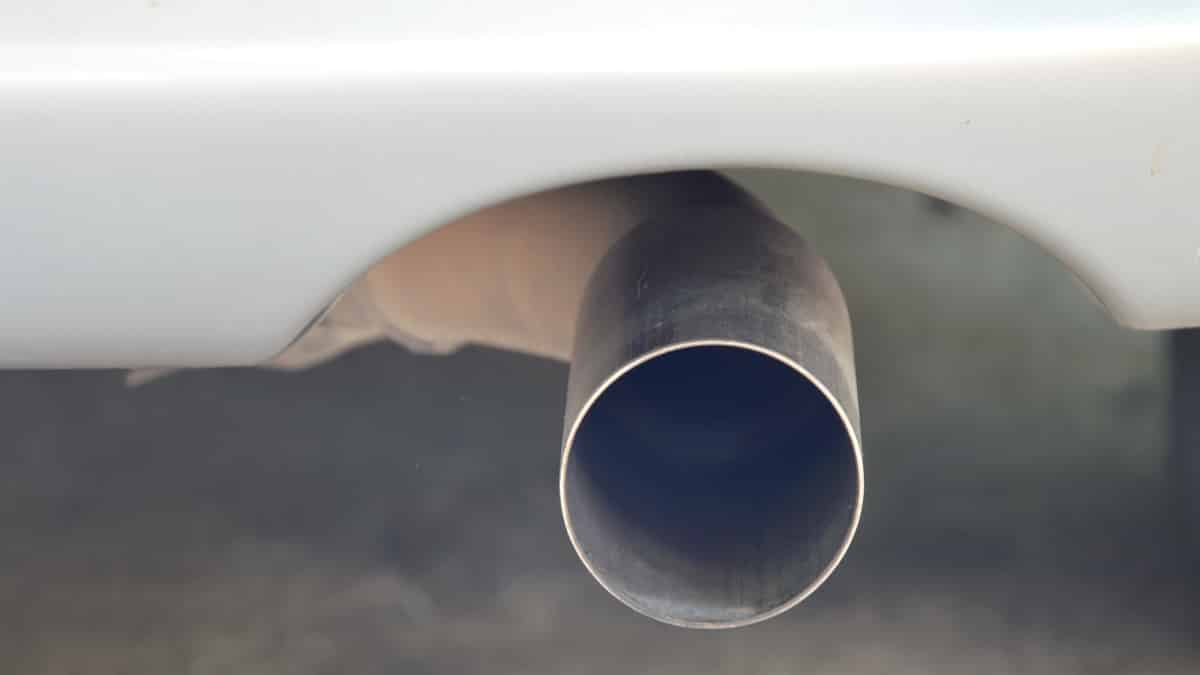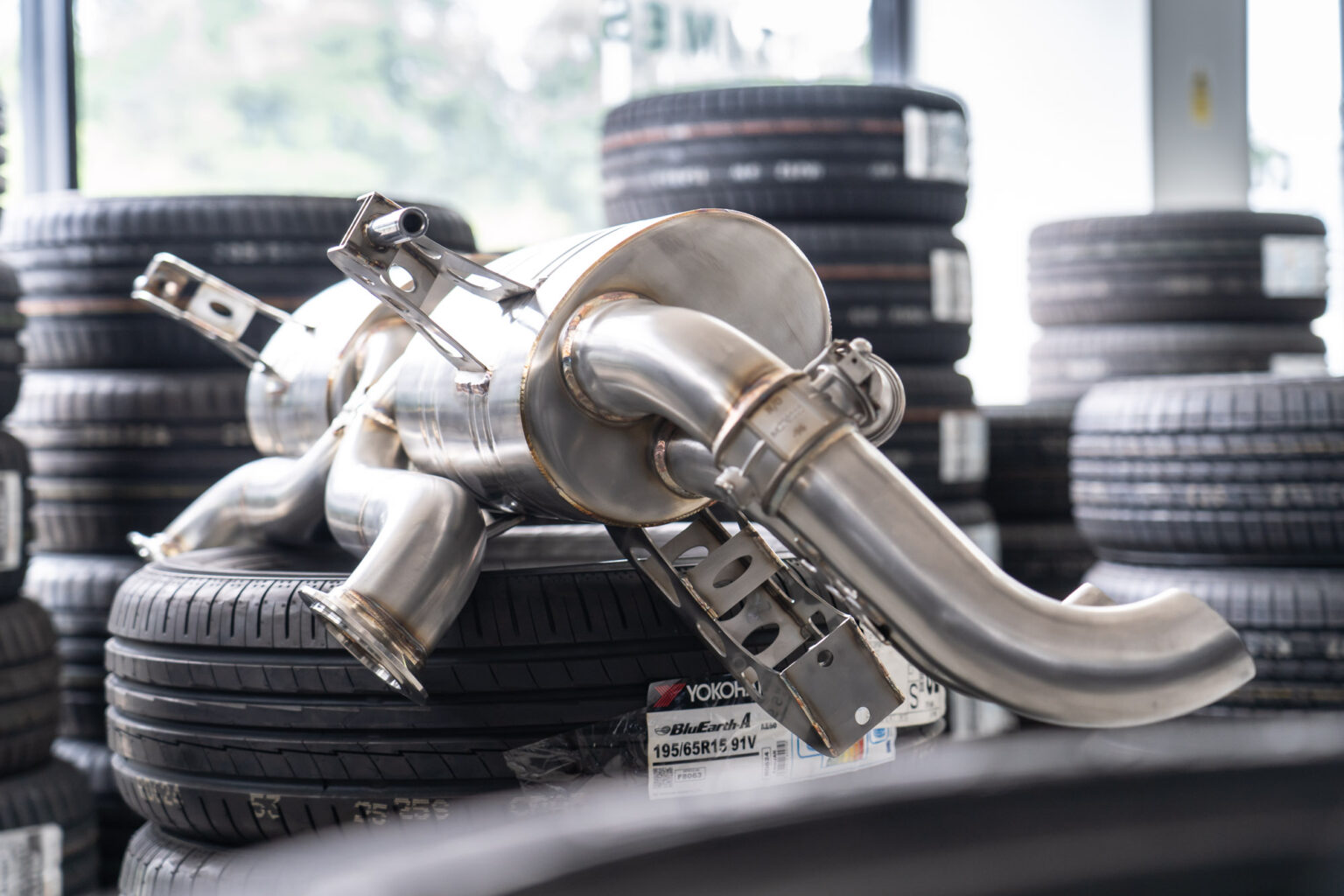Ever noticed that strange rattling sound coming from under your car? Or maybe you’ve been hit by a whiff of exhaust fumes while driving? Yeah, it’s not just annoying—it could be dangerous. Learning how to check for exhaust leak is essential for your safety and your car's performance.
Listen up, folks. An exhaust leak isn’t something you want to ignore. Not only does it mess with your car’s efficiency, but it can also expose you to harmful gases like carbon monoxide. Yikes, right? So, whether you’re a seasoned mechanic or a rookie driver, this guide will walk you through everything you need to know about spotting and fixing those pesky leaks.
Here’s the deal: we’ll cover the basics, signs to watch out for, tools you’ll need, and step-by-step instructions to get the job done. By the end of this, you’ll be equipped with the knowledge to keep your exhaust system in top shape. Let’s dive in!
Read also:Noelle Leyva Leak Onlyfans The Untold Story You Need To Know
Table of Contents:
- Why You Should Check for Exhaust Leaks
- Common Signs of an Exhaust Leak
- Tools You’ll Need
- Step-by-Step Guide to Check for Exhaust Leak
- Diagnosing Specific Problems
- Safety Tips When Checking for Leaks
- Repair Options for Exhaust Leaks
- Cost Considerations
- Prevention Tips
- Frequently Asked Questions
Why You Should Check for Exhaust Leaks
First things first, why should you care about exhaust leaks? Well, it’s not just about your car’s performance—it’s about your safety. Exhaust leaks can lead to dangerous levels of carbon monoxide entering your cabin, which is super toxic and can cause serious health issues. And let’s be real, no one wants that.
Plus, an exhaust leak can mess with your car’s fuel efficiency, leading to higher gas bills. It can also cause unnecessary noise pollution, which is not only annoying but might even get you fined in some areas. So yeah, checking for exhaust leaks is a must-do for every car owner.
Common Signs of an Exhaust Leak
Now that we’ve established why it’s important, let’s talk about how to spot an exhaust leak. Here are some common signs to watch out for:
1. Unusual Noises
One of the most obvious signs is strange noises coming from under your car. You might hear a hissing, rattling, or roaring sound, especially when you start the engine or accelerate. If you notice any of these sounds, it’s time to investigate further.
2. Smell of Exhaust Fumes
If you catch a whiff of exhaust fumes inside your car, that’s a big red flag. This could mean that there’s a leak somewhere in the exhaust system, allowing harmful gases to enter the cabin. Don’t ignore this warning sign—it’s serious business.
Read also:Mercedes Blanche Leak The Untold Story You Need To Know
3. Decreased Performance
Exhaust leaks can affect your car’s performance. You might notice a decrease in power, reduced fuel efficiency, or even engine stalling. These issues can make driving a real pain, so it’s best to address them sooner rather than later.
Tools You’ll Need
Before you start checking for exhaust leaks, make sure you have the right tools. Here’s a list of essentials:
- Flashlight
- Protective gloves
- Car jack or lift
- Soapy water (for detecting leaks)
- WD-40 or similar spray (optional)
Having these tools on hand will make the process smoother and safer. Trust me, you don’t want to be fumbling around without the right gear.
Step-by-Step Guide to Check for Exhaust Leak
Alright, let’s get into the nitty-gritty. Here’s a step-by-step guide to help you check for exhaust leaks:
Step 1: Park Your Car in a Safe Location
Find a well-ventilated area, preferably outdoors, to work on your car. Safety first, folks. Make sure your car is turned off and cooled down before you start inspecting.
Step 2: Inspect the Exhaust System
Using a flashlight, check the entire exhaust system for any visible damage. Look for cracks, rust, or loose connections. Pay special attention to the exhaust manifold, gaskets, and muffler.
Step 3: Use Soapy Water
Here’s a cool trick: mix some dish soap with water and spray it along the exhaust system. If you see bubbles forming, that’s a sign of a leak. This method is super effective and easy to do.
Step 4: Listen for Noises
Start your engine and listen carefully for any unusual sounds. A hissing or roaring noise usually indicates a leak. If you hear anything suspicious, follow the sound to locate the source of the leak.
Diagnosing Specific Problems
Once you’ve identified a potential leak, it’s time to diagnose the problem. Here are some common issues and how to fix them:
1. Cracked Exhaust Manifold
A cracked exhaust manifold is a common issue that can cause leaks. If you spot a crack, you’ll need to replace the manifold. This is a more involved repair, so it might be best to leave it to the professionals.
2. Loose Gaskets
Loose or worn-out gaskets can also lead to leaks. If this is the case, you can try tightening the gaskets or replacing them altogether. It’s a relatively simple fix that you can do yourself.
3. Rusty Pipes
Rust is a sneaky culprit when it comes to exhaust leaks. If you notice rust on your exhaust pipes, it might be time for a replacement. Rust can weaken the metal, causing it to crack or break over time.
Safety Tips When Checking for Leaks
Safety should always be your top priority when working on your car. Here are some tips to keep in mind:
- Always work in a well-ventilated area to avoid inhaling harmful fumes.
- Wear protective gloves to prevent cuts and burns.
- Make sure your car is turned off and cooled down before you start inspecting.
- Use a car jack or lift to safely elevate your vehicle if needed.
Following these safety tips will help you avoid accidents and injuries while working on your car.
Repair Options for Exhaust Leaks
Once you’ve identified the problem, it’s time to decide on a repair option. Here are some choices:
1. DIY Repairs
If you’re handy with tools, you can try fixing the leak yourself. Simple issues like loose gaskets or small cracks can often be repaired at home. Just make sure you have the right tools and know what you’re doing.
2. Professional Repairs
For more complex issues, it’s best to leave it to the professionals. A certified mechanic can diagnose and fix the problem quickly and efficiently. Plus, they’ll have access to specialized tools and parts that you might not have.
Cost Considerations
Repair costs can vary depending on the severity of the leak and the parts involved. Here’s a rough estimate:
- Gasket replacement: $50-$150
- Exhaust pipe replacement: $100-$300
- Exhaust manifold replacement: $300-$800
Keep in mind that prices can vary based on your location and the make/model of your car. It’s always a good idea to get multiple quotes before proceeding with repairs.
Prevention Tips
Prevention is key when it comes to exhaust leaks. Here are some tips to keep your exhaust system in good shape:
- Regularly inspect your exhaust system for signs of wear and tear.
- Address small issues before they turn into bigger problems.
- Avoid driving over rough terrain or potholes, as they can damage your exhaust system.
- Keep up with routine maintenance, such as oil changes and tire rotations.
By following these prevention tips, you can extend the life of your exhaust system and avoid costly repairs down the road.
Frequently Asked Questions
Q: How often should I check for exhaust leaks?
A: It’s a good idea to inspect your exhaust system at least once a year, or more frequently if you notice any warning signs.
Q: Can I drive with an exhaust leak?
A: Not recommended. Driving with an exhaust leak can expose you to harmful fumes and damage your car’s performance. Get it fixed as soon as possible.
Q: What causes exhaust leaks?
A: Common causes include rust, loose connections, and worn-out gaskets. Regular maintenance can help prevent these issues.
Kesimpulan
And there you have it, folks—a comprehensive guide on how to check for exhaust leaks. Remember, early detection and prevention are key to keeping your car running smoothly and safely. So, don’t hesitate to roll up your sleeves and give your exhaust system a thorough inspection.
Now, here’s where you come in. Did you find this guide helpful? Got any tips or tricks of your own? Drop a comment below and let’s keep the conversation going. Oh, and don’t forget to share this article with your fellow car enthusiasts. Together, we can keep those exhaust systems in tip-top shape!


